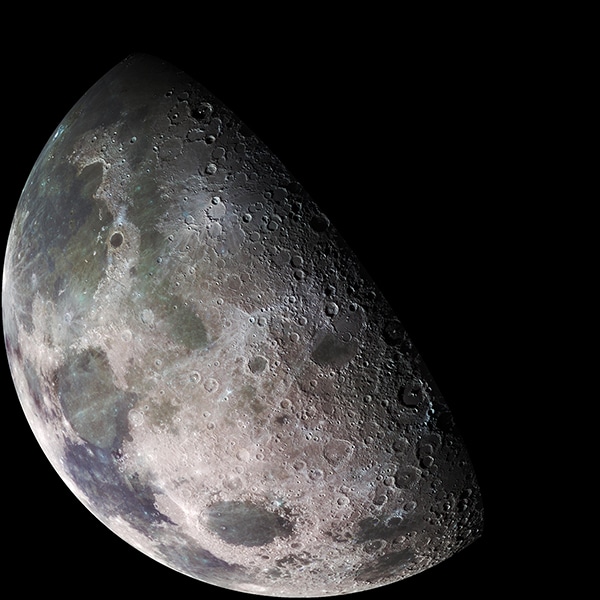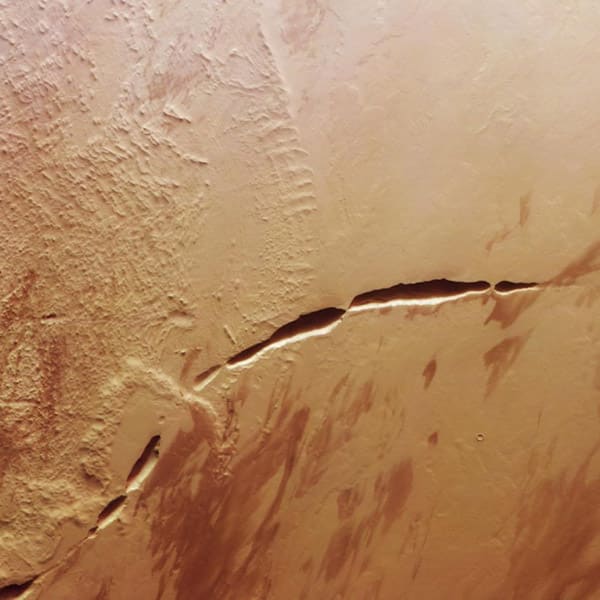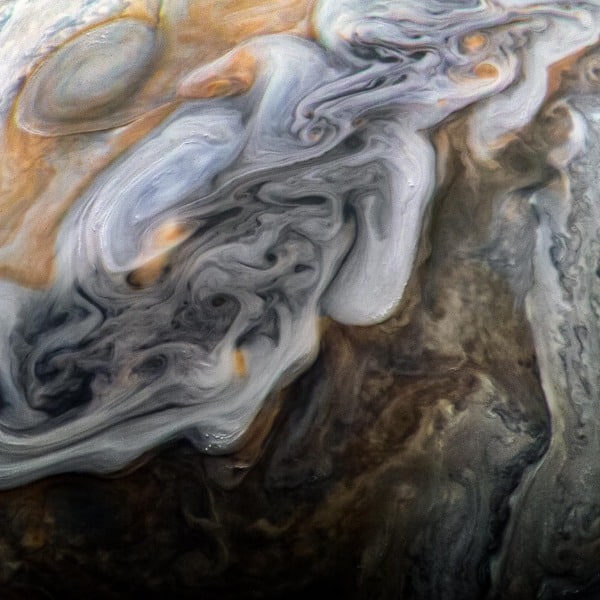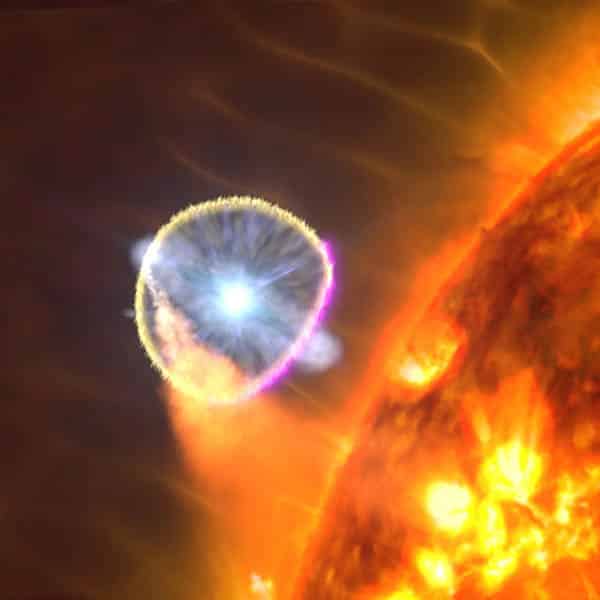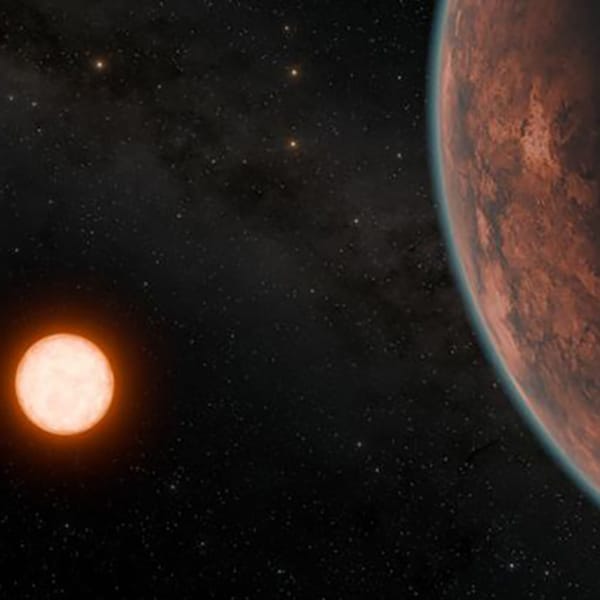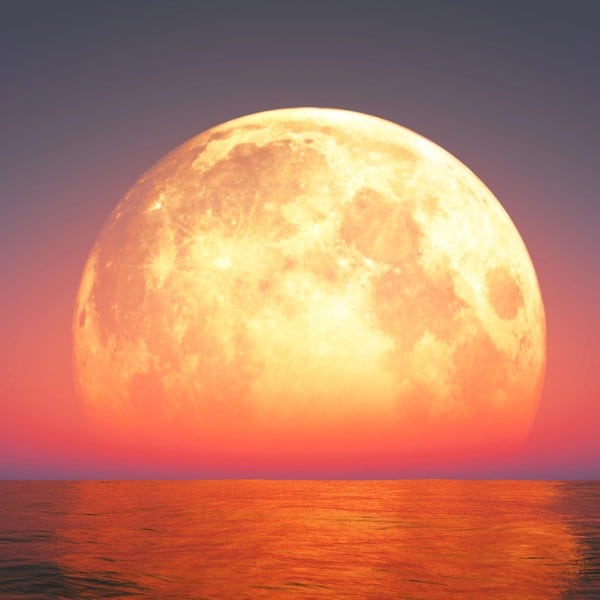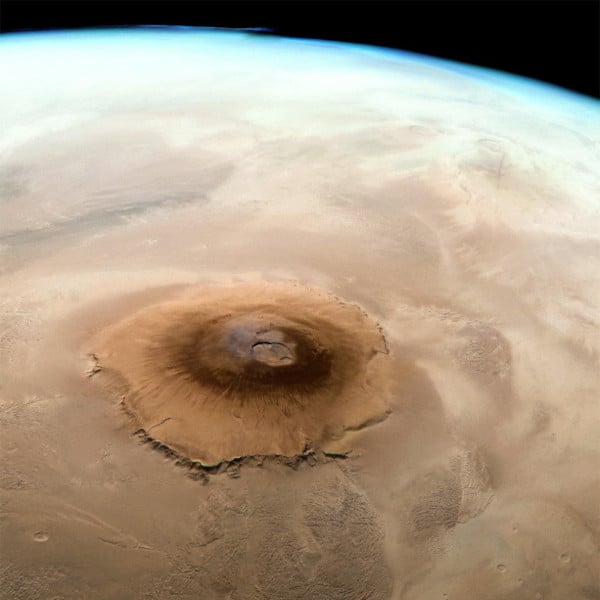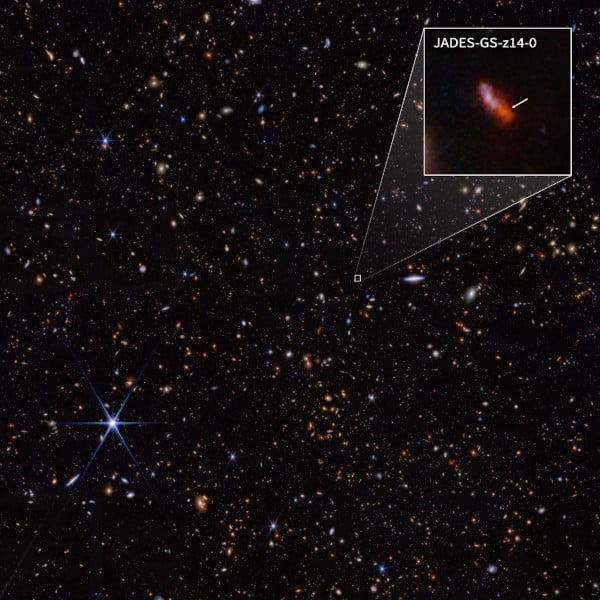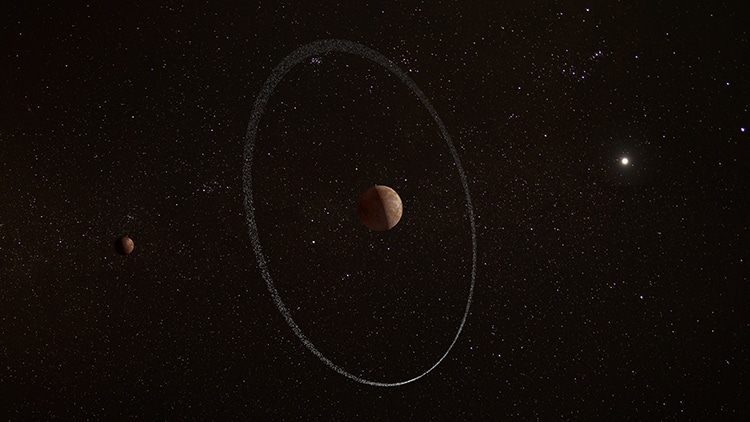
Artist rendering of the dwarf planet Quaoar and its newly discovered rings. (Photo: ESA / CC BY-SA 3.0 IGO)
The Solar System is a source of constant amazement. As telescope and imaging technology improves, astronomers learn more about distant worlds we can barely see. One of these is the icy dwarf planet Quaoar, only a third of the diameter of Earth’s moon. It orbits our Sun about 4 billion miles from Earth in the Kuiper belt, a strip of frozen space debris that includes Pluto. Unlike Pluto, however, Quaoar has been discovered to have rings (like Saturn). What's more, as announced in a recent Nature paper, the rings are surprisingly far from the celestial body.
Quaoar (pronounced KWA-wahr, and named after the creator god of the Indigenous Tongva people) appears to be about half the size of Pluto. Scientists think it is likely a dwarf planet, meaning its own gravity pulls its mass together but not enough to clear the local region of space it inhabits. Quaoar even has a moon. However, even with the most powerful telescopes, Quaoar is but a tiny dot. Yet watching that dot with the world's largest optical telescope—the Gran Telescopio CANARIAS in the Canary Islands and a specialized HiPERCAM camera—researchers could watch the “blip” in registered light as Quaoar passed between the camera and a distant star.
While doing this, the researchers noticed that both before and after this “blip,” there were other dips in light. These dips in light reflect the two sides of Quaoar's ring passing in front of the distant light source. This was a very surprising discovery. For one thing, only a limited number of our Solar System's objects have rings: Jupiter, Uranus, Neptune, Saturn, and Chariklo (a centaur) and Haumea (another Kuiper belt body). The ring is also very far from the dwarf planet's central body. A distance of three of the planet's radii is typically considered the Roche limit, named for 19th-century French astronomer Édouard Roche. Within this distance, the debris forming a ring is within the planet's gravitational pull enough to remain separate as a ring.
Beyond that distance, it was long thought that a ring would become a moon within decades. For Quaoar, its ring, which is seemingly uneven, is about 2,500 miles away from the central body. This is about 1,400 miles over the Roche limit. “It really shouldn’t be there,” says Dr. Bruno Morgado, a professor at the Federal University of Rio de Janeiro in Brazil and lead author of the paper. “We should look at this limit again and better understand how the satellites are formed.” It is possible Weywot, Quaoar's moon, has disrupted the normal gravitational calculations. It also may be that icy particles in this cold region do not form moons as easily.
“If the data weren’t so convincing, I would insist they weren’t real,” Dr. Morgado told The New York Times. “The fact that we’ve found rings around three of them already means that rings around things are really pretty common,” says Dr. Richard G. French, an emeritus professor of astrophysics at Wellesley College who was not involved with the research. “You might think that a small ring around a small object in the distant solar system doesn’t have broad applicability… But actually this process, of how particles accrete, is really the beginning step of planet formation.”
The secrets of Quaoar's rings may in fact help decipher the secrets of the Solar System's formation.
Astronomers have discovered that Quaoar, a small (presumably) dwarf planet in the Kuiper belt, has rings like Saturn.
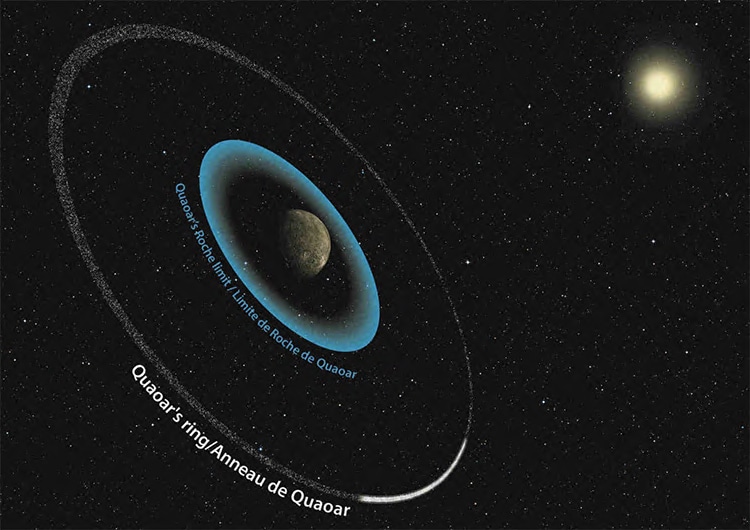
Quaoar's ring system are beyond its “Roche Limit.” (Photo: Paris Observatory)
According to accepted theory, the rings should not exist so far from the tiny celestial mass.
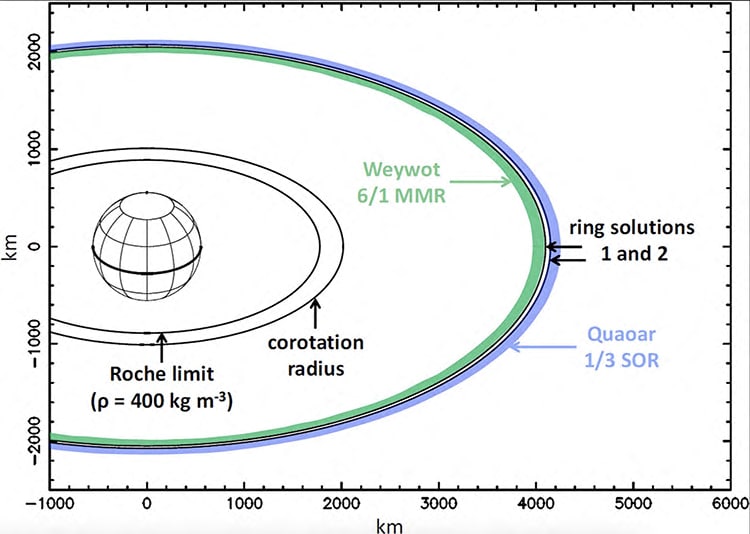
The dynamical environment of Quaoar’s ring. (Photo: Figure 5/Morgado et al.)
h/t: [Mashable, The New York Times]
Related Articles:
James Webb Space Telescope Releases Stunning New Shot of the Pillars of Creation
Green Comet Makes an Appearance for the First Time in 50,000 Years
Tiny Meteorite Collected in 2021 Contains the Building Blocks of Life













































































